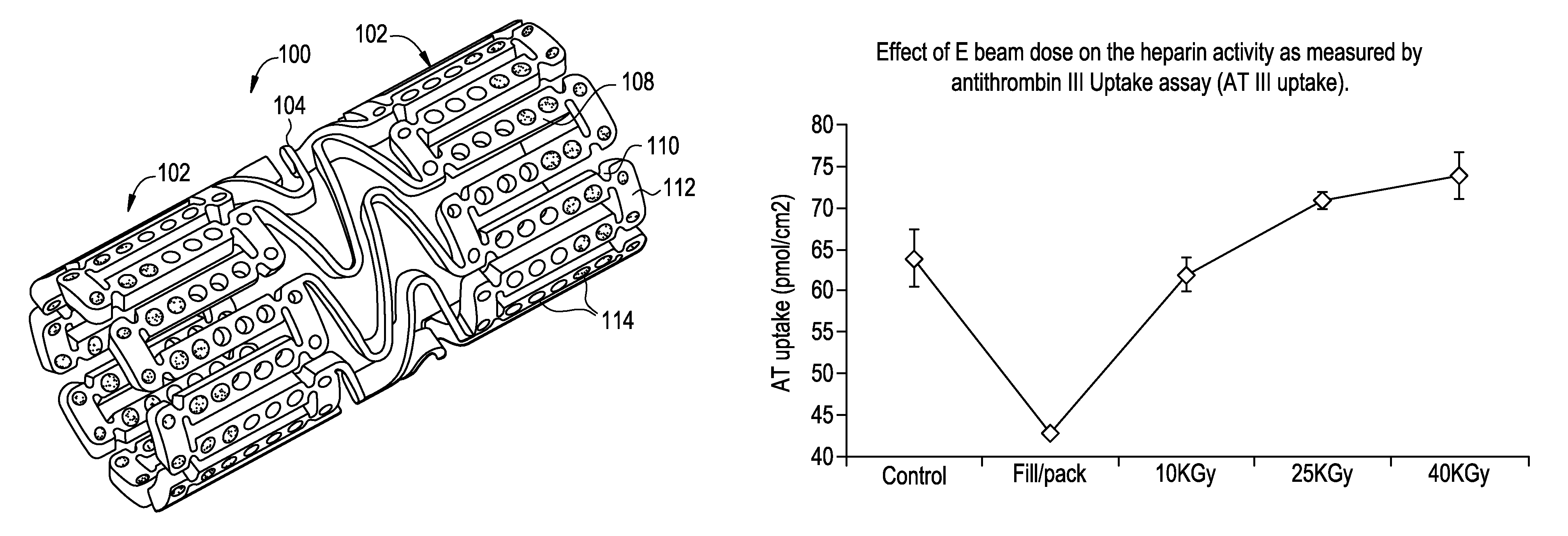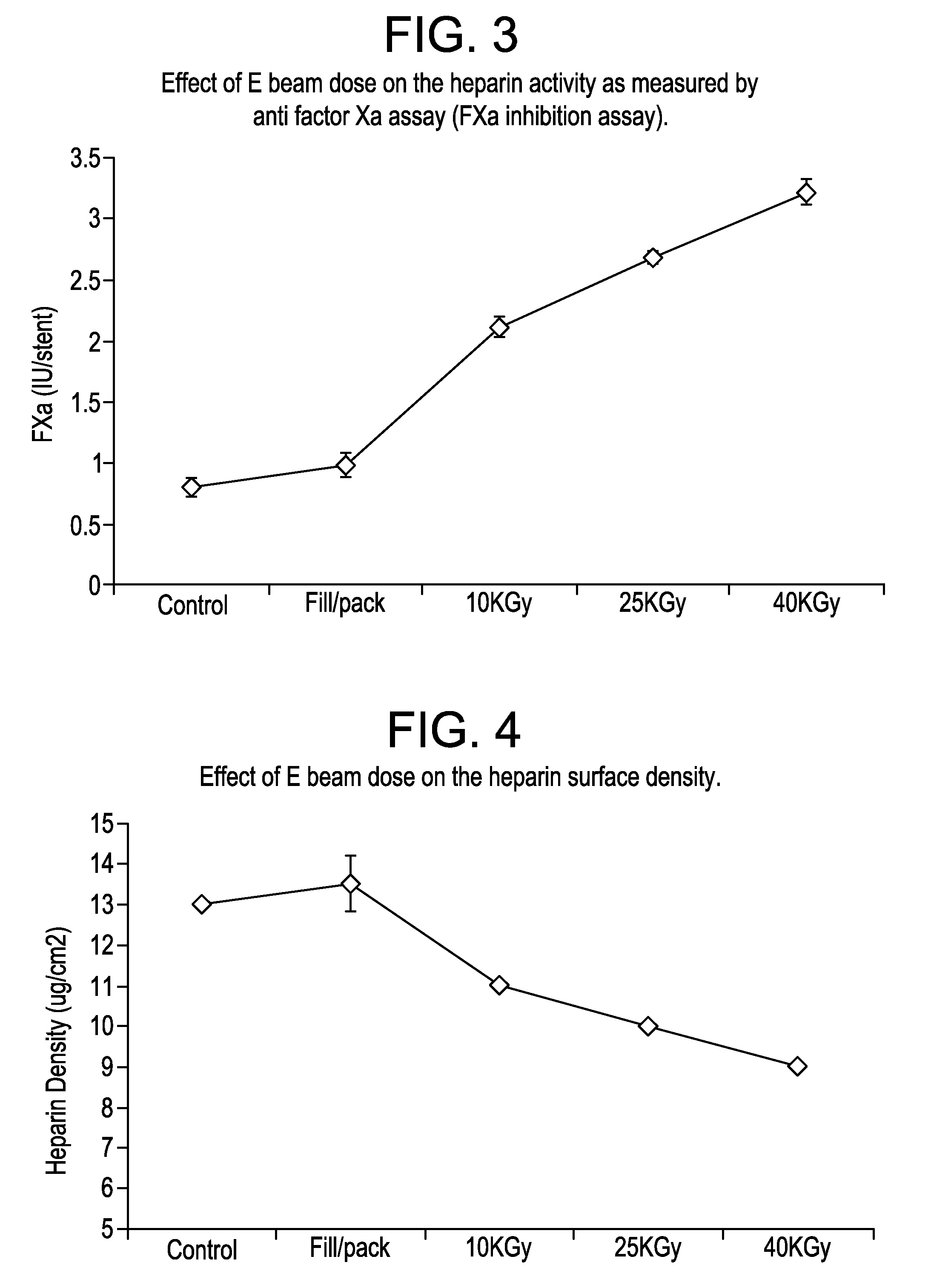E beam sterilization of medical devices comprising bioactive coating
a bioactive coating and medical device technology, applied in the direction of preventing decay, packaging foodstuffs, therapy, etc., can solve the problems of reducing the stability of the coating, requiring several processing steps for the modification or coating of the device, and requiring several processing steps for the sterilization process of bare metal devices
- Summary
- Abstract
- Description
- Claims
- Application Information
AI Technical Summary
Benefits of technology
Problems solved by technology
Method used
Image
Examples
example 1
[0041]Electropolished Cobalt Chromium stents of the design illustrated in FIG. 1 were coated with surface-bound heparin. The heparin coating is covalently bound to the stent surface through a series of intermediate layers. The final heparin coating was washed with water repeatedly and has a constant final heparin surface density of about 13 ug / cm2. The activity of the heparin surface was determined at about 65 pmol / cm2 by a competitive antithrombin III binding assay and 0.9 Heparin Unity / stent by a modified USP FXa inhibition assay.
[0042]The reservoirs in the struts of these heparin coated stents were filled with a matrix of poly(lactide-co-glycolide) (PLGA) and sirolimus by an ink-jetting process. After drying at elevated temperatures to remove excess solvent from the PLGA / sirolimus matrices in the reservoirs, the stents were crimped onto matching catheter balloons with a pneumatic crimper and placed in plastic trays. The plastic stent trays were then placed into aluminum pouches e...
example 2
[0048]In this study, heparin coated stents were subjected nine cycles of DMSO exposure which mimics the real processing conditions of a drug-filling process used in the manufacturing of drug eluting stent. The solvent DMSO mixed with heparin coating on the stent surface after each exposure was removed with a combination of conditions such as during for one hour at either room temperature or at 55 C followed by twenty-four hours annealing at either room temperature or at 55 C. After these lengthy solvent treatment and removal processes, the stents with heparin coatings were vacuumed packaged with drying agents and sterilized by an E beam process at 25 KGy dose. The heparin activity of stents undergoing various conditions was determined by standard AT III uptake assay.
[0049]
TABLE 1Effect of DMSO, temperature, and E beam combination on heparin activityPROCESSTESTImmerse in DMSO forTESTSGROUP1 minute for each24 hrs ofResidual(N = 3)cycle. 9 cycles total1 hr of Drying @Annealing @Sterili...
PUM
| Property | Measurement | Unit |
|---|---|---|
| area | aaaaa | aaaaa |
| area | aaaaa | aaaaa |
| temperature | aaaaa | aaaaa |
Abstract
Description
Claims
Application Information
 Login to View More
Login to View More - R&D
- Intellectual Property
- Life Sciences
- Materials
- Tech Scout
- Unparalleled Data Quality
- Higher Quality Content
- 60% Fewer Hallucinations
Browse by: Latest US Patents, China's latest patents, Technical Efficacy Thesaurus, Application Domain, Technology Topic, Popular Technical Reports.
© 2025 PatSnap. All rights reserved.Legal|Privacy policy|Modern Slavery Act Transparency Statement|Sitemap|About US| Contact US: help@patsnap.com



